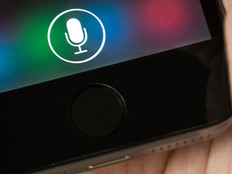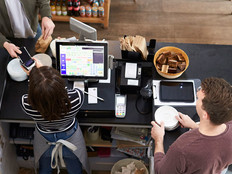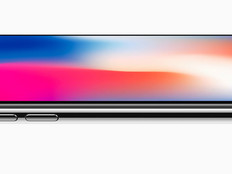Mobile Devices Equal Productivity
When Apple introduced the iPad in 2010, the tablet had an immediate and dramatic impact on the computing environment — including business computing. Entering a field that had already seen an influx of smartphones and other ultraportable devices, the iPad sent a clear signal to users and to IT shops everywhere that computing, collaboration and work could be done differently.
While the desktop and notebook PC continues to play a role in enterprise computing, there are now other ways to facilitate communication with devices that allow employees to connect in the most effective manner. After all, a better-connected workforce is likely more cost-effective and productive as well.
Today, employees expect to be able to reproduce the efficiency and ease of use of home applications within the work environment. They also expect to navigate seamlessly from home or from the coffee shop, to the workplace. This requires providing the right tools to enable communication that is faster, more effective and more productive.
Smartphones and Tablets in Healthcare
It’s no secret that business, and in particular healthcare, has undergone radical changes over the past decade. A wave of new technologies has improved patient care and altered the way healthcare professionals interact with colleagues and patients. These innovations have boosted productivity, lowered costs and created new and better ways to communicate.
Healthcare providers are prime candidates for mobile and wireless technology. As physicians, allied health professionals and technicians roam facilities and treat patients, the ability to grab patient medical records, view lab and other test results, and exchange various pieces of information is attractive.
Yet, success isn’t a given. A healthcare organization must develop a sound strategy, deploy smartphones and tablets wisely, and ensure privacy and security for patients. Says Clinton Smith, manager of IT risk and compliance at Grant Thornton: “There are enormous opportunities, but organizations have to confront an array of challenges, including people carrying their own devices and loading their own apps.”
Mobility at Doylestown Hospital
Today, the face of healthcare is changing rapidly. An aging population, growing pressure to reform the industry, and escalating costs are heaping pressure on healthcare providers like never before. At the same time, the need for information technology — for health professionals, organizations and consumers — is growing.
Mobility offers a way for healthcare providers to become more efficient and deliver services faster and better. These days, smartphones and tablet PCs are being used for a variety of tasks, including accessing electronic medical records (EMRs), physician order entry, tapping into drug databases, viewing radiological images, charting, sharing reference data and illustrations with patients and internal communications.
One organization that has jumped on the adoption curve is Doylestown Hospital, an independent 247-bed facility located just outside Philadelphia. A growing number of the medical center’s 420 physicians (spanning 40 specialty areas) carry iPhones — and some of the staff are migrating to iPads as well. “The iPhone was the first device with powerful capabilities and an easy-to-use interface,” notes Dr. Scott Levy, vice president and chief medical officer.
Dual Communication Networks
In 2005, Doylestown deployed both cellular and Wi-Fi networks. “We felt as though technology and electronic communications were becoming a clinical requirement,” Levy says. After extensive testing, the 30-person IT staff determined that a cellular network created no interference problems as long as it operated below 3 watts of power. (Typical cell phone service within a hospital setting can be spotty and may interfere with diagnostic equipment.)
 Dr. Scotty Levy, vice president and chief medical officer of Doylestown Hospital, believes doctors benefit from the instant access of information made available by smartphones.
Dr. Scotty Levy, vice president and chief medical officer of Doylestown Hospital, believes doctors benefit from the instant access of information made available by smartphones.As a result, Doylestown opted for a 0.6W network. “A lot of hospitals tell everyone to turn off their phones,” Levy explains. “We felt it was necessary to overcome the technical hurdles and extend a wireless infrastructure throughout the institution.”
At about the same time, the hospital’s Medical Executive Committee decided that the facility should move away from beepers and embrace a more sophisticated real-time communication infrastructure. The committee made a decision to support the iPhone.
“The Physician Hospital Organization decided that we were going to support the initiative by providing data plans to any physician on the medical staff who agrees to use real-time communication,” Levy says. The majority of medical staff bought into the concept and began carrying iPhones.
Today, the hospital offers an array of mobile solutions, and it continues to expand its capabilities. One of the most effective tools is an alert system that notifies doctors immediately when an important event takes place. It serves as a replacement for pagers.
In one instance, an infectious control officer at the hospital received an e-mail message from the Pennsylvania Department of Health about a gastro-intestinal infection spreading among school-aged children. The hospital relayed the alert to physicians. “One doctor had a child sitting in his office at that exact moment, and he was able to tell the parents exactly what it was,” Levy adds.
Immediate Access to Data
Alerts are only the beginning. Many physicians on staff have a phone number on file in DropBox, a web-based file hosting service. Doctors can access these numbers from a computer or smartphone, and when someone updates a number it is immediately reflected in the directory.
Doylestown also stores other information in DropBox, including protocols for antibiotics and surgical procedures. “Instead of distributing the information once a year and doctors tossing the paperwork in their drawer or lab pocket, they have it available whenever they need it,” Levy notes. “Using their smartphones, they have instant access to information.”
The medical center, which has adopted electronic medical records, also has software in place that allows physicians to handle order entry electronically. The entire record is available through software from MEDITECH, a medical informatics provider, accessed from the iPhone.
“Doctors are able to pull up any piece of clinical information,” Levy notes. This includes vital signs, lab reports, X-ray information and any progress notes. What’s more, a doctor can access this information from anywhere. “If a doctor is out of the office, there’s no need for a nurse to read everything to the doctor. The doctor simply views it and takes action. There is a lot smaller probability of error,” he says.
The facility is also migrating to the use of iPads. Levy is currently testing the tablets and expects to adopt several new applications within the next 12 to 18 months. “The greatest asset of the iPad is its form factor, including the high level of portability,” he says. “The touch screen offers advantages over a mouse.”
Mobility at UPMC Mercy
At UPMC Mercy Hospital, part of the University of Pittsburgh Medical Center, mobility has become the centerpiece for a new era of healthcare. The Pittsburgh facility, with 2,200 employees and 1,200 nurses, has turned to smartphones to connect nurses with EMRs. Nurses carry BlackBerry smartphone devices so they can access patient information on the go and at bedside, says Bruce Haviland, CIO for UPMC Mercy.
 Bruce Haviland, CIO for UPMC Mercy Hospital, shows off one of the BlackBerry smartphone devices that UPMC Mercy Hospital workers use.
Bruce Haviland, CIO for UPMC Mercy Hospital, shows off one of the BlackBerry smartphone devices that UPMC Mercy Hospital workers use.In the past, the facility primarily depended on computers on carts along with a Wi-Fi wireless network for internal use and pagers for outside connectivity. “We didn’t want nurses tied to a pager and a landline. Smartphones create a more natural and flexible way for nurses and others to work,” he explains.
As a result, UPMC Mercy has instituted a smart alert system that provides crucial information to caregivers. The hospital uses the alerts when it transports patients within the facility. Caregivers receive a proprietary text message notifying them that a patient is ready to be moved. Doctors are able to input orders through a computerized physician order entry system, and nurses receive the information instantly on their BlackBerry devices.
Enhanced Patient Care
The system uses a BlackBerry Enterprise Server and encryption to maintain Health Insurance Portability and Accountability Act compliance. This replaces the need for a doctor to hand the unit secretary an order and wait while it is entered into the EMR and then found when the nurse happens to check the record. “It has made the process far more efficient and saves time,” Haviland says.
The system is fast and simple to use. The sender visits a web page and selects from a template, clicks the appropriate drop-down box for the right message and then chooses from a list of available recipients. “When a patient presses the call button, the secretary answers the phone and then routes the request to the right person. The unit secretary acts as the quarterback and fires off messages to the nurses based on patients’ needs,” Haviland explains.
“Because nurses receive text messages, they’re not interrupted in the middle of tasks, and they don’t wind up wasting time walking up and down hallways,” Haviland points out.
He estimates that the facility has trimmed thousands of steps and eliminated more than 20 minutes a day per nurse in wasted time. “The system has completely changed the way they work.” Moreover, patient ratings have improved since the hospital began using the system.
Tablets Take Hold at Stanford University School of Medicine
Tablets are also coming into favor at the Stanford University School of Medicine. That is, as long as they aren’t too small, says Larry Chu, MD, an assistant professor of anesthesia. He uses an iPad in his practice and is also the designer of an iPad app called StanMed.
StanMed gives Stanford medical students, residents, fellows and faculty immediate access to clinically useful and accurate educational modules, tutorials, videos, podcasts and cognitive aids to help facilitate learning at the point of care.
“A few years ago, the industry was really trying to push tablets,” Chu says. “Physicians were slow to adopt because the products were heavy, they had a short battery life and the form factor required some getting used to.
“When the iPad was introduced, it was different from tablets because it was lightweight, low cost, had a large screen size, was easy to use and had a long battery life,” he adds. “Plus, since many doctors already had iPhones, they were trained for the iPad. All these small things together make huge sense at the point of care.”
Chu and others believe the iPad and other tablet devices are dramatically changing the way content is consumed by both clinicians and medical students. The reason: The information demands of modern medicine make it impossible for one person to know everything they need to know.
“Even simple procedural content — like inserting an arterial catheter — was something you studied in a textbook,” Chu says. “Making those procedures available at the point of care with live video, photos and descriptions is revolutionizing learning.”







